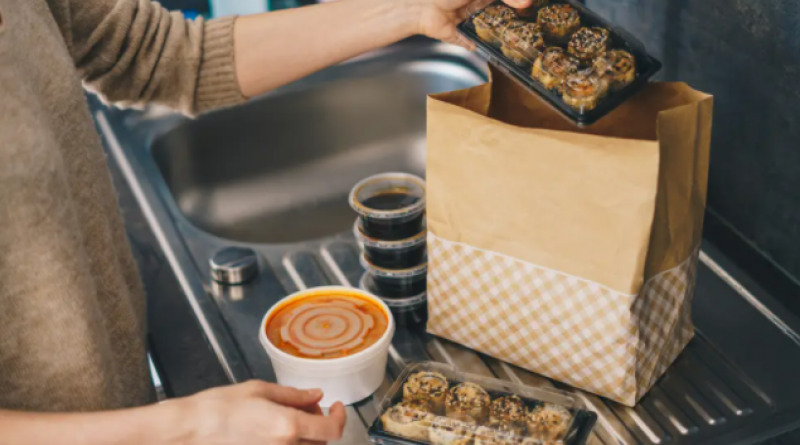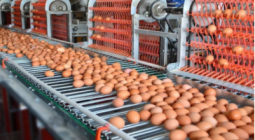How to make your next takeaway dinner more environmentally-friendly

As our consumption habits change to reduce our impact on the planet, Kate Ng takes a look at how we can make takeaways more environmentally friendly
Ordering a takeaway is one of life’s greatest conveniences (and joys), but all the packaging can generate a lot of waste, and carbon emissions are produced during the food’s journey from the restaurant to your doorstep - rather than just going to the fridge.
In recent years, the world has been forced to face the severity of climate crisis head on, and scientists have urged the public to do anything they can to help reduce mankind’s impact on the planet.
Getting a takeaway may seem low on the list of priorities when it comes to tackling the climate crisis, but it’s a consumption behaviour that has seen rapid growth in the past year due to the coronavirus pandemic.
In the first quarter of 2021 alone, Just Eat reported a 79 per cent surge in orders, led by huge demand in the UK. The platform processed 64 million orders in total in the first four months of this year, up 96 per cent in the same period last year.
In the same period, Deliveroo reported an 88 per cent jump in quarterly food orders as people continue with the habit of having food and groceries delivered to their doorstep. The online food delivery platform expects the number of orders to continue growing this year by at least 50 per cent.
With so many of us ordering takeaways, it is important to consider how we can continue enjoying them while minimising our carbon footprint. Here are four ways you can make getting a takeaway more sustainable:
Reduce food waste
The Count Us In campaign, backed by organisations like ActNow, Do Nation and Planet Super League, estimates that if one billion people take practical individual action to reduce their carbon footprint, they could reduce as much as 20 per cent of global carbon emissions.
It recommends taking actions such as reducing food waste and eating more plant-based food, in order to keep an individual’s carbon pollution to the minimum.
“When you throw food away, you waste more than a meal,” explains the campaign. “You’re also wasting the energy that was used in growing, producing, packaging and transporting it.”
Cutting down on food waste also means households will contribute less to organic waste rotting on landfill sites, which will in turn create less methane, a greenhouse gas that contributes to climate change.
Instead of throwing away leftovers from a takeaway, find creative ways to use them up the next day. You could turn them into a sandwich, as recommended by sandwich expert Max Halley, or add ingredients you already have to create an entirely new meal.
Opt for less plastic
According to a 2020 study, residents in the US and UK produce more plastic waste per person than any other nation, with a single Briton throwing away almost 99kg of plastic annually.
Getting a takeaway used to mean you were left with lots of single-use plastic containers, cutlery, and packaging, but restaurants are being encouraged to lower the levels of unnecessary plastic packaging used.
Ensuring you order from a restaurant that uses eco-friendly packaging, such as recyclable or biodegradable packaging can help you reduce the amount of plastic waste your household produces.
Some plastic containers are also reusable if you wash them out, which saves them from being thrown out if they are not recyclable.
Delivery platforms like Deliveroo also give you the option to decline plastic cutlery from the restaurant, so you can use what you have at home without having to add anything to landfill.
Eat local
Eating locally has been hailed as an environmentally-friendly action for several years now, and applies to takeaways too. Ordering from a restaurant in your local area means the food doesn’t have to travel as far to arrive at your doorstep, reducing greenhouse gas emissions.
It also helps support local businesses, which have been particularly important during lockdown. Look for restaurants that prioritise using local and sustainably-sourced ingredients, as could help lower your overall carbon footprint even further.
Eat more plant-based takeaways
Most studies show that moving towards a more plant-based diet is one of the best things individuals can do to reduce their carbon footprint and impact on the planet.
Animal products largely require more resources and produce higher emissions compared to plant-based alternatives, and the World Health Organisation said that reducing livestock herds would “reduce emissions of methane”, the second largest contributor to global warming after carbon dioxide.
It would appear that a dietary shift towards plant-based takeaways has already been triggered by lockdown. Data from the British Takeaway Campaign showed that vegan and vegetarian orders has increased since the beginning of lockdown by 199 per cent.
According to research published in the Proceedings of the National Academy of Sciences in the United States of America, a global shift towards a plant-based diet could reduce greenhouse gases caused by food production by 70 per cent.
28 July 2021
INDEPENDENT




